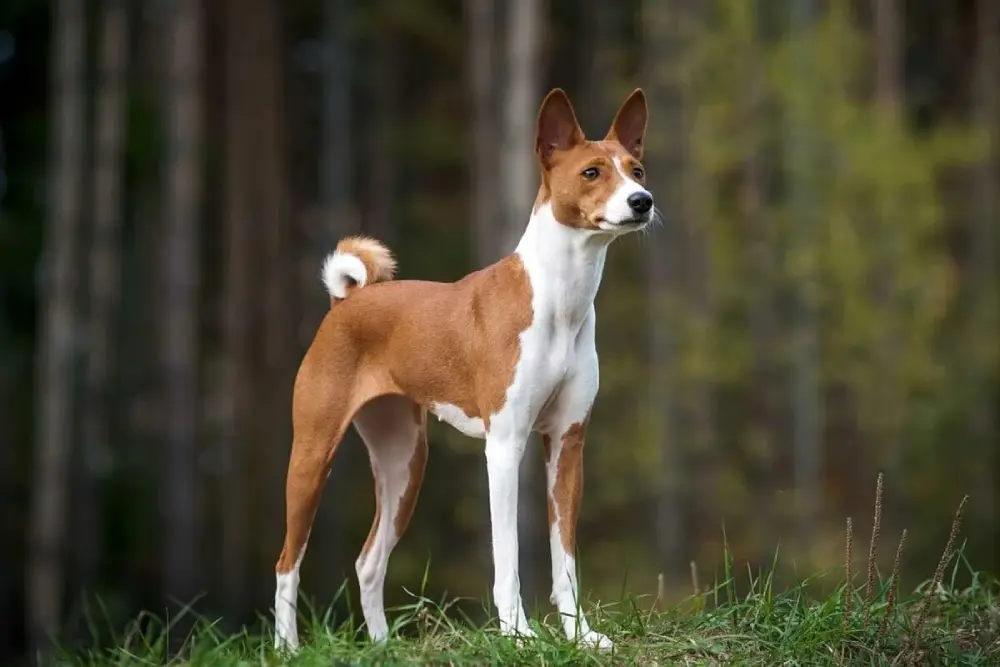History
The Basenji is among the most primitive breeds discovered in the African Congo with Pygmy hunters. Early explorers called the dogs after the tribes that owned them or the area where they were found, such as Zande dogs or Congo terriers. The native tribes used the dogs (which often wore a large bell) as pack hunters, driving game into nets. Early attempts to bring the dogs to England in the late 1800s and early 1900s were unsuccessful because they all succumbed to distemper. In the 1930s, a few dogs were successfully brought back to England and became the foundation (along with subsequent imports from the Congo and Sudan) of the breed outside of Africa. The name “Basenii.” meaning “bush thing,” was chosen. The early imports attracted much attention, and soon after dogs were brought to America. The breed’s popularity as both a pet and show dog grew modestly but steadily. In the 1950s, a surge of popularity occurred due to a book and movie featuring a Basenji.

The 1980s saw two important but controversial events for the Basenji in America. First, several Basenjis were brought from Africa in an attempt to widen the gene pool and combat some widespread hereditary health problems; some of these introduced the previously unrecognized brindle color into the breed. Second, the Basenji was recognized by the American Sighthound Field Association as a sighthound and allowed to compete in lure-coursing trials, Its body structure and hunting style had previously been deemed too un-sighthound-like. The Basenji has always been hard to categorize. It retains several primitive characteristics, most notably its lack of barking ability and its yearly, rather than twice yearly, estrus cycle.
Basenji Dog Temperament
Some consider the Basenji to have terrier-like mannerisms because it is feisty for a hound. More often it is considered catlike in mannerisms: clever, inquisitive. stubborn, independent, and reserved. Its hunting roots are very evident, as it loves to chase and trail. It needs regular mental and physical stimulation lest it become frustrated and destructive Basenjis may be barkless, but they are not mute. They do make a sort of vodel howl. and shriek and occasionally bar, but just one or two “fox barks” at a time.
Upkeep
The Basenji is an active dog that needs daily mental and physical exercise. Its needs can be met by a long walk followed by a vigorous game or free-running in a safe enclosed area. It can live outdoors only in warm climates and generally does best as an indoor dog with access to a yard. Coat care is minimal, consisting of only occasional brushing to remove dead hair.
Health
- Major concerns: Fanconi syndrome. PRA, Basenji enteropathy
- Minor concerns: PPM, PK
- Occasionally seen: CHD
- Suggested tests: eve, DNA test for PK. Fanconi urine test
- Life span: 12-14 years
Form and Function
The Basenji is square-proportioned and high on the leg. It is far more slightly built and longer-legged than most other primitive breeds, giving it a good amount of speed and the ability to perform the double-sus pension gallop. Its erect ears help it locate prey in thick bushes and may act as heat dissipaters. Its short coat also aids in dealing with the hot climate of Africa.









